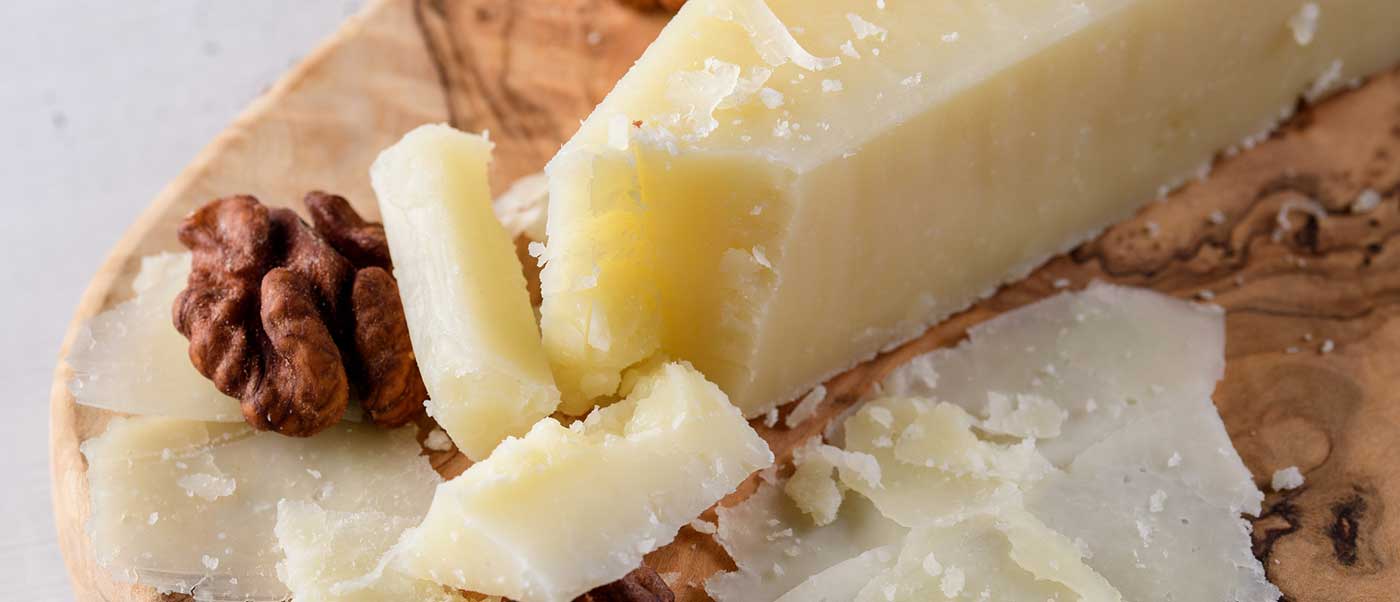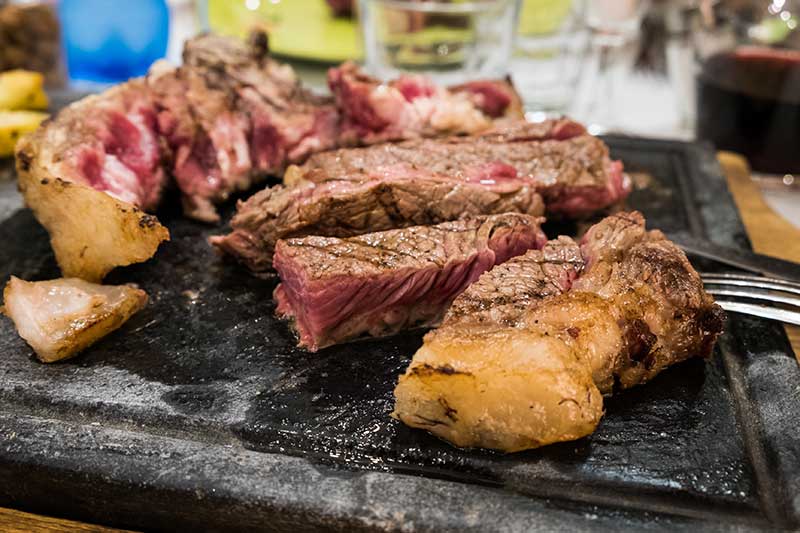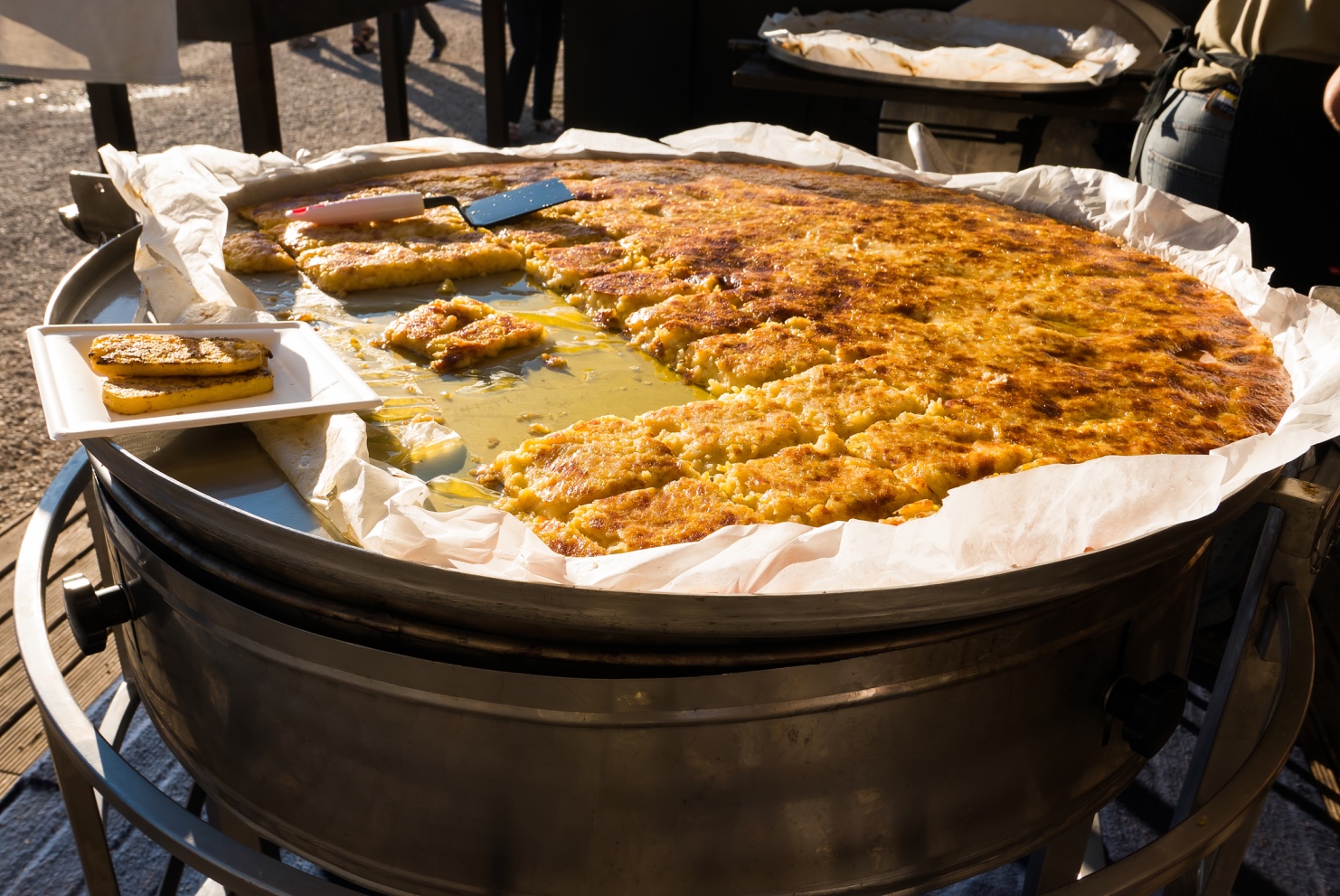Pecorino Romano: the ancient cheese with the “cappa nera”
While they praised the “vigor” of this cheese “made from sheep milk,” which was also part of Roman soldiers’ diet, neither Homer nor Virgil would have thought it could become this popular!
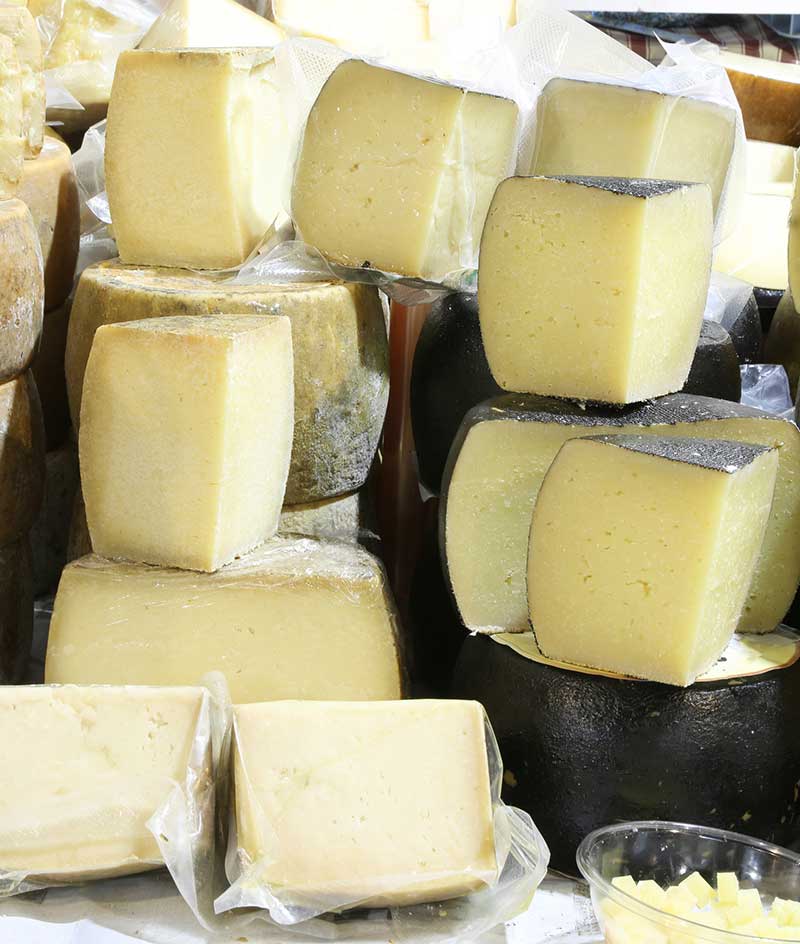
Indeed, Pecorino Romano has been one of the first Italian cheeses to be exported, more precisely to the US, as early as 1909, in light of the heavy migratory movement that brought so many Italians across the ocean in those years.
Pecorino Romano was born in Rome, but Sardinia made it hers in 1886, when using salt to preserve food was forbidden by the mayor of our capital. Eager to find an alternative area to keep working, producers chose Sardinia. Today, little has changed, as 97% of production takes place on the island, especially in Macomer, the town where the consortium for the protection of Pecorino Romano has its see.
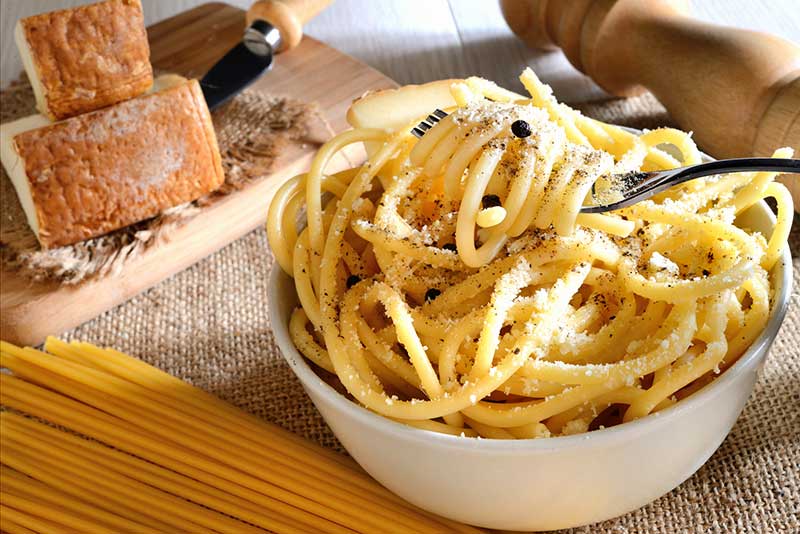
Pecorino Romano obtained DOP (denominazione di origine protetta, or protected origin denomination) recognition in 1996. You’ll find this precious and well deserved pedigree visibly marked on each wheel, a symbol of quality and Italian tradition.
Flavorsome and spicy in equal parts, cheese experts’ lingo calls it “animal,” in name of a strength that makes it the centerpiece of many a famous recipe, including cacio e pepe and Amatriciana.
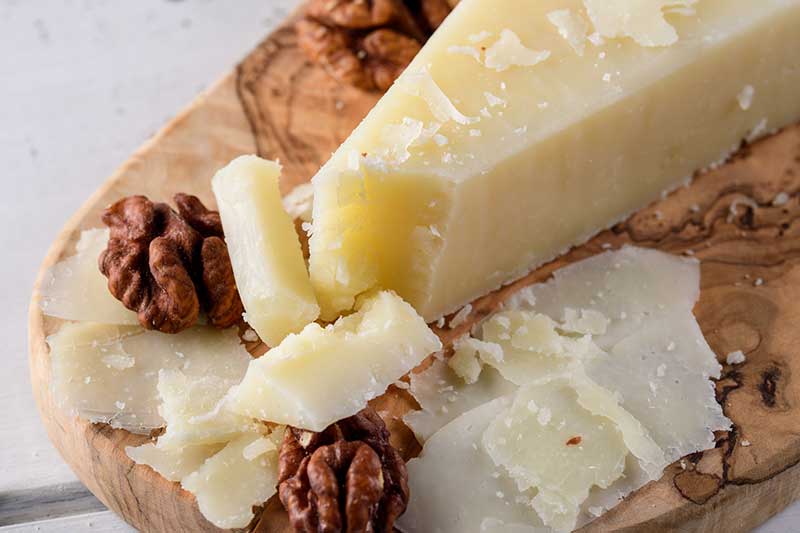
Remember: every time you have a bite of Pecorino Romano DOP, it’s not only an exceptional cheese you taste, it’s 2000 years of history!
Pesto: a fully DOP sauce!
You’d think it’s easy: basil, garlic, pine nuts, oil and Parmesan: whip it all together in a mixer and voilà! Nothing more wrong… or better, nothing more cliché and superficial.

Pesto alla Genovese’s ingredients are very specific, protected by protocol and must all be DOP! Now, here are the right steps to follow if you want a pesto DOC… oops… DOP!
First of all, you need a stone (better if marble) mortar and a wooden pestle: the speed of a mixer generates heat, which oxidizes the basil.
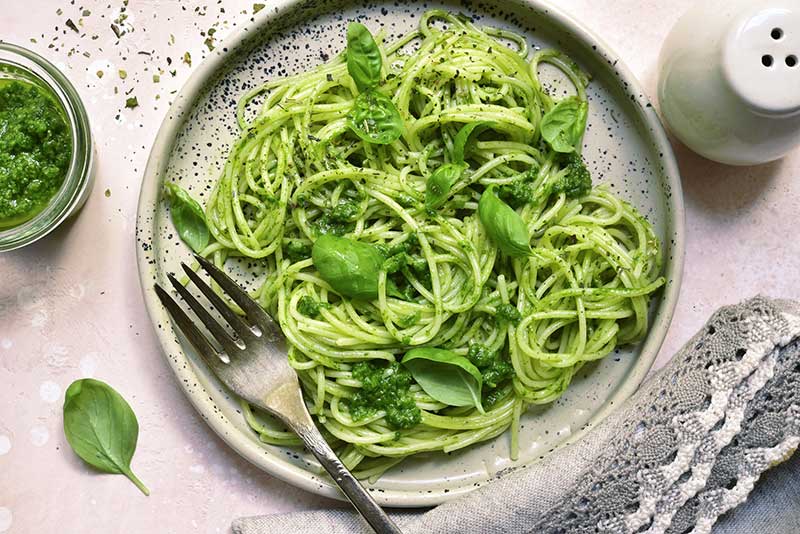
The first ingredient to “pestare,” or crush, is garlic from Vessalico, but not too much, a clove every 30 leaves of basil. Mind, it must come from the Arroscia Valley, where sea air makes it sweet and delicate.
Then, we’ll add basil, the one grown in the Genoa area of Pra: it, too, has a DOP denomination and its small, fragrant leaves release a very unique scent, free from that minty after-note you get from other varieties.
Then, in comes the salt, which will help turn the ingredients into a cream. The fresh, slightly tangy Taggiasche olives’ extra virgin oil will protect basil from oxidation, without changing its flavor. Last, but not least, in come pine nuts, Parmigiano Reggiano and Pecorino Sardo.
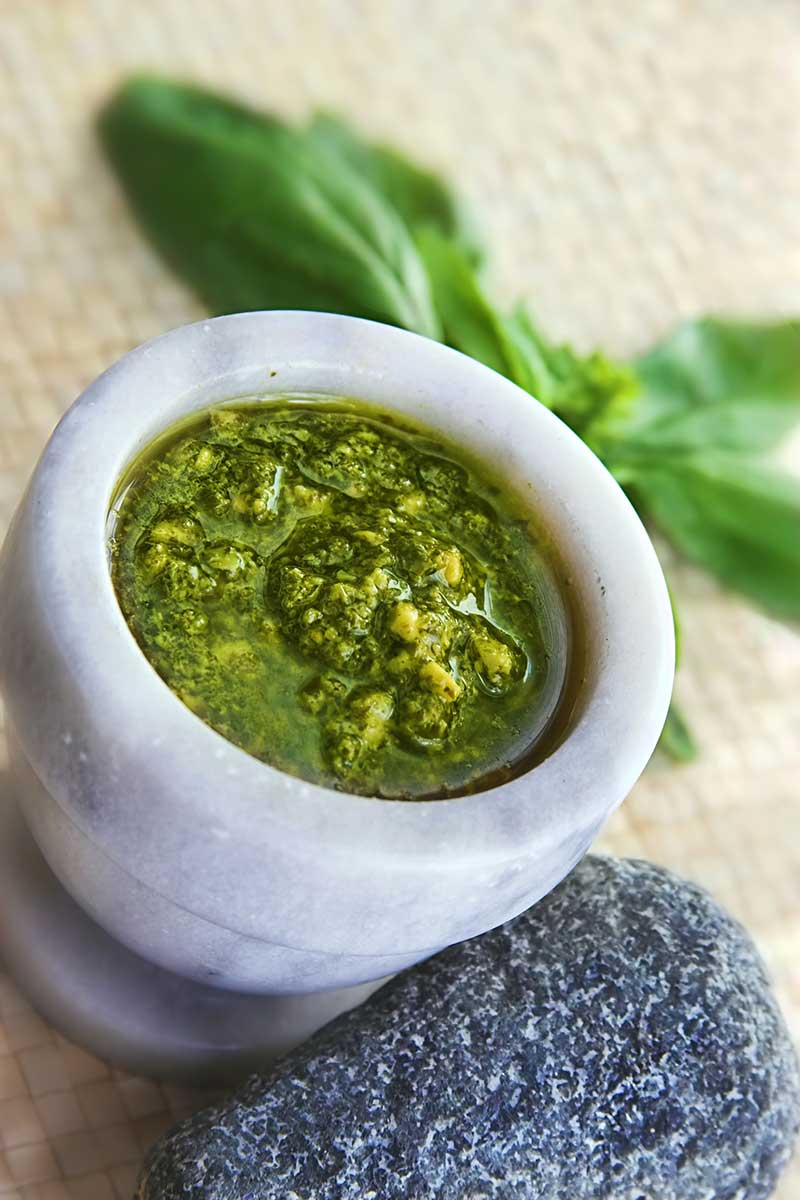
What if we can’t get all of these ingredients? Well, there are some tricks you can use to get a good pesto nevertheless. Basil leaves can be boiled for a few seconds to soften their taste and , while extra virgin olive oil is absolutely essential, there is a version of pesto made with butter typical of Liguria’s inland, where oil was, once upon a time, harder to get by.
If your garlic is too strong, remove its green heart and reduce its amount. No mortar and pestle? No fear: freeze your mixer’s blades and jug: they won’t heat up the sauce! Add the ingredients in the right order and you will get a delicious pesto.
Zolfini beans: a queen’s favorite!
Caterina de Medici loved them and they are a staple of Buckingham Palace’s kitchens. They are the most expensive beans around because their cultivation is limited and protected: they must be sowed exactly 100 days after the first day of the year and that’s why they are also known as “fagioli del 100,” or the beans of 100.

Very small, round and pale yellow in color, their skin is thin but they need to cook quite a lot! They grow exclusively in the Pratomagno area, about 30 km from Florence, where hills hold hands with rocky, dry lands and it’s here that our zolfini grow. They are also called “burrino” beans, because of their creamy, soft — buttery, indeed — texture.
A steak has less proteins than a bowl of zolfini; they are highly digestible, which makes them the perfect side for any main course. They are also gluten free, so excellent for celiacs, too.
Once upon a time, they were cooked inside flasks, surrounded by hot hashes. The only things added were water, sage, garlic and olive oil coming from local hills. Today, just like all those centuries ago, they are served on crunchy bread or with some kale.

They are an important ingredient for ribollita, Tuscany’s famous bread soup and, if you want to give them a modern twist, them make a delicious cream.
